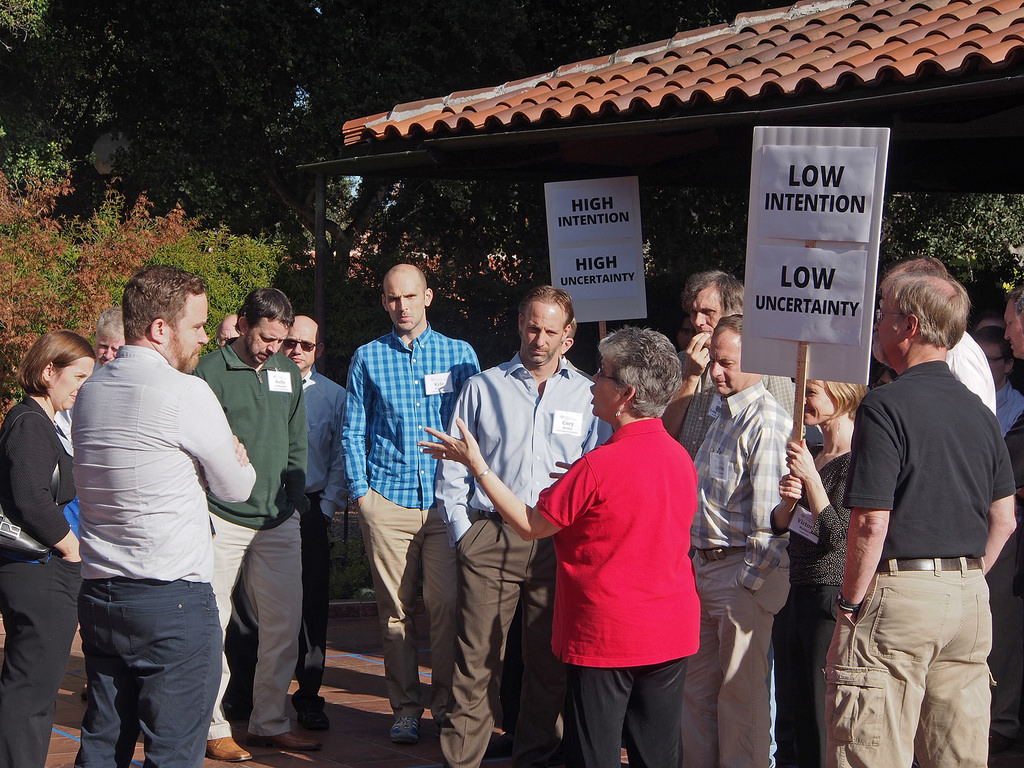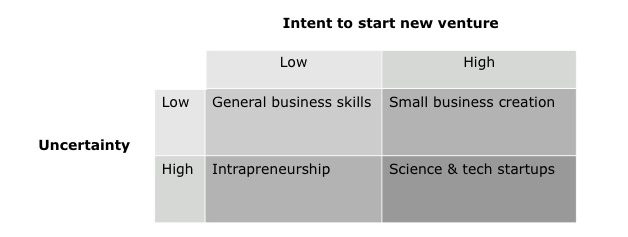
If you’re a champion of entrepreneurship education, you know how challenging it can be to get other faculty and administrators to share your vision and passion. The biggest challenge, other than overcoming biases, often comes down to the perennial question, “What is entrepreneurship?” I’ve been in meetings and at events where definitions range from “venture creation” to “small business development” to exclusively “the work of Wall Street types.” With so many definitions it’s tricky to have a conversation about entrepreneurship, and almost impossible to work with colleagues to design a comprehensive suite of entrepreneurship offerings. So how can you get everyone on the same page, or at a minimum start to understand what your colleagues mean when they use the word entrepreneurship?
For a recent Pathways in Innovation faculty convening I designed a hands-on activity you can use to explore the definition of entrepreneurship. The activity draws on Wheadon and Duval-Coeutil’s paper, ‘Using an Intention-Uncertainty Matrix to Categorize Entrepreneurship Education Offerings’. Wheadon and Duval-Couetil categorize entrepreneurship education offerings along two axes: (1) low/high intention to start new ventures and (2) low/high level of uncertainty of value proposition. Using this approach, a broad range of educational offerings, from general business skills to venture creation, can be placed in the matrix and discussed.
For the Pathways convening we created a life-size version of this matrix using painter’s tape and hand-held signs to represent each quadrant. The faculty attending began by moving into the quadrant where, in an ideal world, they would like the majority of their educational offerings to be (say, directed toward small business creation); this alone spurred conversations about why they wanted their programming to be in that quadrant and what that programming would look like. Next, faculty moved into the quadrant that represented where their programming currently resides. Finally, people moved around the matrix, first assuming the role of faculty from the same or different disciplines, and next the role of various campus administrators.
While doing this activity, I was struck by the degree to which faculty moved around the matrix when adopting different roles in different disciplines. This sometimes led to a renewed understanding of why past conversations and collaborations with colleagues had been unsuccessful, e.g., faculty from the social and behavioral sciences sometimes equate entrepreneurship with the creation of start-ups, and thus not something necessarily relevant to their students. Reframing the conversation to focus on intrapreneurship and thus the development of skills related to an entrepreneurial mindset, such as creativity, might result in an increased perception of relevance to social science students and thus greater likelihood of cross-disciplinary collaboration on entrepreneurship programming.
The key takeaway? The answer to the question, “What is entrepreneurship?” depends on your point of view. Varied definitions will always exist, but using this matrix can help spur conversations about it, building a shared understanding and starting point for transforming the ecosystem together.
—
